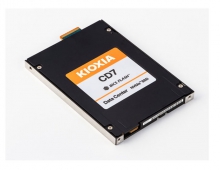
HP Announces Dissaponting 2013 Outlook
Hewlett-Packard Chief Executive Meg Whitman on Wednesday warned of an unexpectedly steep earnings slide in 2013, with revenue set to fall in every business division except software.
At HP's annual Securities Analyst Meeting, being held in San Francisco, the company's leadership outlined strategic priorities for the future and providing a detailed multiyear roadmap to turn the company around.
During her keynote, HP's president and chief executive officer Meg Whitman outlined progress made over the past year to stabilize the business and lay the foundation for a multiyear turnaround. The operating and organizational models have been integrated, centralized and streamlined, and an executive team is in place to execute the strategy.
HP says it is positioned to extend its leadership into the major trends driving IT investment -- cloud computing, information optimization and data security. In May, HP initiated a multiyear restructuring designed to realign its cost structure and create investment capacity to drive innovation against its strategic priorities and rebuild its balance sheet while returning capital to shareholders. The company has maintained research and development (R&D) spending, along with a steady focus on preserving the long-term health of the business. The company is on track to deliver on its savings targets and complete the restructuring by the end of fiscal 2014.
Whitman walked through a multiyear roadmap to turn the company around. By 2016, she expects the company's revenues to be growing in line with gross domestic product (GDP), with operating profit growing faster than revenues, industry-leading margins and disciplined capital allocation.
"HP has a powerful set of assets, a culture of engineering innovation and a trusted brand," said Whitman. "Now, we have to focus on bringing our incredible assets together to deliver for our customers, employees and shareholders."
Cathie Lesjak, HP's chief financial officer, provided a financial outlook for the company in fiscal 2013. The company estimates non-GAAP diluted earnings per share for fiscal 2013 to be in the range of $3.40 to $3.60 and GAAP diluted EPS for fiscal 2013 to be in the range of $2.10 to $2.30. Fiscal 2013 non-GAAP diluted EPS estimates exclude after-tax costs of approximately $1.30 per share, related primarily to the amortization of purchased intangible assets, restructuring charges and acquisition-related charges. Lesjak also articulated the company's long-term commitment to financial discipline and reducing net debt.
Due to several factors, including exceptional runoff in four major accounts and selective pursuit of deals to ensure the appropriate margin structure, HP anticipates its Enterprise Services group's revenue to decline by 11 to 13 percent in fiscal 2013 with operating margins between 0 and 3 percent.
To create efficiencies from the combination of the printing and PC units, HP PPS has been focused on consolidating supply chain functions and shrinking from six sales teams to three, while reducing functional support organizations from 12 to seven. In addition, the group is focused on simplifying the business by reducing the number of SKUs in the printing business by 30 percent and the number of platforms in the PC business by 25 percent by the end of 2014.
The PC group within HP PPS has been refocused around customer needs. The group also completed a major refresh of its product line with a focus on design. In addition, the group launched the HP ElitePad 900, the first tablet specifically designed for businesses big and small, and is reinvesting in mobility.
The printing group within HP PPS has been focused on developing new business models such as Ink Advantage, a program targeting the company's price-sensitive customers in emerging markets that has expanded to 82 countries, and the Ink in the Office initiative, which is targeting business customers.
HP will also simplify its Enterprise Group's product portfolio through common architectures and convergence. By selling Converged Infrastructure, Converged Cloud and Software-defined Data Centers, HP expects to grow over the long term both revenue and market share in the key areas of networking, storage and cloud, while increasing revenue from HP's x86 server business. In addition, the company's Project Moonshot is developing new ultralow-power server technologies that will address the fast growing HyperScale server market. HP was the first large server vendor to announce these servers, and the company expects that by 2015, ARM and Atom servers will represent 15 percent of the global server market.
HP's software portfolio has grown through acquisitions to become the world's sixth largest software company. Today, HP Software serves almost the entire Fortune 100 with No. 1 and No. 2 leadership positions in key segments within the enterprise software market, which is expected to grow to a $54 billion market in 2015.
HP's chief operating officer presented an update on the company's progress on Converged Cloud. He will detail how the company is developing and delivering the essential components and solutions for businesses to build and consume all forms of cloud offerings. HP's approach is differentiated by its ability to give customers choice in platform and delivery model with confidence in management and security to deliver an enterprise service level agreement. The company grew cloud revenue 39 percent in 2012 to nearly $4 billion. Veghte projected that estimated cloud revenue for the company would continue to grow, reaching $8.4 billion by 2015.
During her keynote, HP's president and chief executive officer Meg Whitman outlined progress made over the past year to stabilize the business and lay the foundation for a multiyear turnaround. The operating and organizational models have been integrated, centralized and streamlined, and an executive team is in place to execute the strategy.
HP says it is positioned to extend its leadership into the major trends driving IT investment -- cloud computing, information optimization and data security. In May, HP initiated a multiyear restructuring designed to realign its cost structure and create investment capacity to drive innovation against its strategic priorities and rebuild its balance sheet while returning capital to shareholders. The company has maintained research and development (R&D) spending, along with a steady focus on preserving the long-term health of the business. The company is on track to deliver on its savings targets and complete the restructuring by the end of fiscal 2014.
Whitman walked through a multiyear roadmap to turn the company around. By 2016, she expects the company's revenues to be growing in line with gross domestic product (GDP), with operating profit growing faster than revenues, industry-leading margins and disciplined capital allocation.
"HP has a powerful set of assets, a culture of engineering innovation and a trusted brand," said Whitman. "Now, we have to focus on bringing our incredible assets together to deliver for our customers, employees and shareholders."
Cathie Lesjak, HP's chief financial officer, provided a financial outlook for the company in fiscal 2013. The company estimates non-GAAP diluted earnings per share for fiscal 2013 to be in the range of $3.40 to $3.60 and GAAP diluted EPS for fiscal 2013 to be in the range of $2.10 to $2.30. Fiscal 2013 non-GAAP diluted EPS estimates exclude after-tax costs of approximately $1.30 per share, related primarily to the amortization of purchased intangible assets, restructuring charges and acquisition-related charges. Lesjak also articulated the company's long-term commitment to financial discipline and reducing net debt.
Due to several factors, including exceptional runoff in four major accounts and selective pursuit of deals to ensure the appropriate margin structure, HP anticipates its Enterprise Services group's revenue to decline by 11 to 13 percent in fiscal 2013 with operating margins between 0 and 3 percent.
To create efficiencies from the combination of the printing and PC units, HP PPS has been focused on consolidating supply chain functions and shrinking from six sales teams to three, while reducing functional support organizations from 12 to seven. In addition, the group is focused on simplifying the business by reducing the number of SKUs in the printing business by 30 percent and the number of platforms in the PC business by 25 percent by the end of 2014.
The PC group within HP PPS has been refocused around customer needs. The group also completed a major refresh of its product line with a focus on design. In addition, the group launched the HP ElitePad 900, the first tablet specifically designed for businesses big and small, and is reinvesting in mobility.
The printing group within HP PPS has been focused on developing new business models such as Ink Advantage, a program targeting the company's price-sensitive customers in emerging markets that has expanded to 82 countries, and the Ink in the Office initiative, which is targeting business customers.
HP will also simplify its Enterprise Group's product portfolio through common architectures and convergence. By selling Converged Infrastructure, Converged Cloud and Software-defined Data Centers, HP expects to grow over the long term both revenue and market share in the key areas of networking, storage and cloud, while increasing revenue from HP's x86 server business. In addition, the company's Project Moonshot is developing new ultralow-power server technologies that will address the fast growing HyperScale server market. HP was the first large server vendor to announce these servers, and the company expects that by 2015, ARM and Atom servers will represent 15 percent of the global server market.
HP's software portfolio has grown through acquisitions to become the world's sixth largest software company. Today, HP Software serves almost the entire Fortune 100 with No. 1 and No. 2 leadership positions in key segments within the enterprise software market, which is expected to grow to a $54 billion market in 2015.
HP's chief operating officer presented an update on the company's progress on Converged Cloud. He will detail how the company is developing and delivering the essential components and solutions for businesses to build and consume all forms of cloud offerings. HP's approach is differentiated by its ability to give customers choice in platform and delivery model with confidence in management and security to deliver an enterprise service level agreement. The company grew cloud revenue 39 percent in 2012 to nearly $4 billion. Veghte projected that estimated cloud revenue for the company would continue to grow, reaching $8.4 billion by 2015.





















